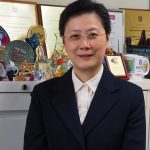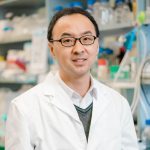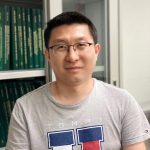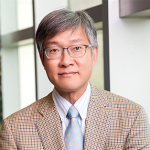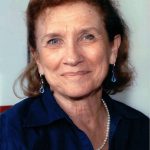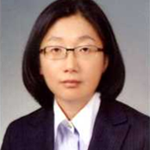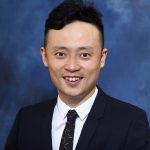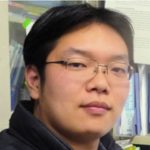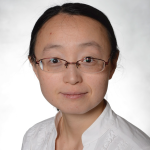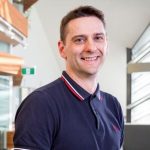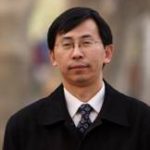Guests
Day 1
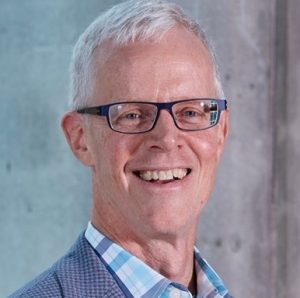
Eric D. BROWN
Professor
McMaster University
Systems and Chemical Biology to Accelerate Antibiotic Drug Discovery
Antibiotic drug resistance has reached crisis proportions, owing to a dearth of new antibiotics. In fact, the last antibiotic of new chemical class and mechanism – approved for human use – was discovered more than 30 years ago. This is despite a renaissance in antibiotic discovery in recent decades that has used modern target-based drug discovery methods. In the Brown Laboratory, we are increasingly turning to cell-based chemical and systems biology approaches to overcome the shortcomings of reductionist target-focused paradigms that have dominated and failed. Here, I describe our efforts to chart chemical and genetic interactions in bacteria on a genome-scale in order to better understand the complexity of bacterial survival strategies and to reveal fresh approaches for antibiotic drug discovery.
References
- Klobucar, K., French, S., Côté, J.-P., Howes, J. R. & Brown, E. D. Genetic and chemical-genetic interactions map biogenesis and permeability determinants of the outer membrane of Escherichia coli. Mbio 11, e00161-20 (2020).
- Stokes, J. M. et al. Pentamidine sensitizes Gram-negative pathogens to antibiotics and overcomes acquired colistin resistance. Nature Microbiology 2, 1–8 (2017).
- Gehrke, S. S. et al. Exploiting the sensitivity of nutrient transporter deletion strains in discovery of natural product antimetabolites. ACS Infectious Diseases 3, 955–965 (2017).
- Côté, J.-P. et al. The genome-wide interaction network of nutrient stress genes in Escherichia coli. mBio 7, e01714-16 (2016).
- French, S. et al. A robust platform for chemical genomics in bacterial systems. Mol Biol Cell 27, 1015–1025 (2016).
- Zlitni, S., Ferruccio, L. F. & Brown, E. D. Metabolic suppression identifies new antibacterial inhibitors under nutrient limitation. Nature Chemical Biology 9, 796–804 (2013).
Prof Eric Brown is a Distinguished University Professor in M.G. DeGroote Institute for Infectious Disease Research at McMaster University. He is a Fellow of the American Academy of Microbiology and has received a number of other awards including the Canadian Society of Microbiologists Murray Award for career achievement and the Canadian Society for Molecular Biosciences Merck Frosst Prize for new investigators. He currently holds a Killam Research Fellowship from the Canada Council for the Arts and a Canada Research Chair in Microbial Chemical Biology. He has served on advisory boards for a variety of companies as well as national and international associations, including a term as President of the Canadian Society of Molecular Biosciences. Currently, he is a member of the editorial board of ACS Infectious Diseases, is the Series Editor of the annual Antimicrobial Therapeutics Review of the Annals of the New York Academy of Science, and a member of the Advisory Board of the Joint Programming Initiative on Antimicrobial Research.
McMaster University, Institute for Infectious Disease Research, Hamilton, Canada
E-mail:ebrown@mcmaster.ca

Jonathan L. SESSLER
Professor
The University of Texas at Austin
Texas Style Metal-based Drug Discovery Efforts
This lecture will present the development of expanded porphyrins as potential drug leads. The presentation will begin with a personal story of a 3x cancer survivor and how with the assistance of great coworkers and collaborators an effort has been made to fight back against this disease by studying the chemistry and anti-cancer biology of gadolinium(III) texaphyrins.
Texaphyrins were the first of the so-called expanded porphyrins–larger analogues of heme pigments–to stabilize a 1:1 complex with a metal cation. Subsequently, and continuing as a focus today, an effort has been made in our laboratories and those of many others to create additional expanded porphyrins. Hundreds are now known. Several from our laboratory have proved useful at stabilizing actinide cation complexes. Selected examples will be highlighted.
Recently, efforts have been made to create so-called immunogenic cell death promoters designed to prevent cancer recurrence based on redox-active gold(I) carbenes. An introduction to this new research direction will serve to close the lecture.
Collaborations with a number of groups, including those of Profs. Dongho Kim, Andrew Gaunt, John Arnold, Stosh Kozimer, Jong Sung Kim, Shunichi Fukuzumi, T.K. Chandrashekar, Dirk Guldi, Changhee Lee, Jan Jeppesen, Steffen Bähring, Zahid Siddik, Rick Finch, Zhengrong Cui, and Tomas Torres, are gratefully acknowledged. Special thanks also go to Jonathan F. Arambula, Gregory Thiabaud, Sajal Sen, Xiaofan Ji, James Brewster, and Daniel Mangel. Early funding came from the US NIH and the CPRIT, with current support provided by OncoTEX, Inc. (disclaimer: JLS is a non-executive board member of OncoTex, Inc.) and the Robert A. Welch Foundation.
References
- Sessler, J. L.; Murai, T.; Lynch, V.; Cyr, M. J. Am. Chem. Soc. 1988, 110, 5586-5588.
- Sessler, J. L.; Seidel, D.; Vivian, A. E.; Lynch, V.; Scott, B. L.; Keogh, D. W. Angew. Chem. Int. Ed., Engl. 2001, 40, 591-594.
- Ho, I.-T.; Zhang, Z.; Ishida, M.; Lynch, V. M.; Cha, W.-Y.; Sung, Y. M.; Kim, D.; Sessler, J. L. J. Am. Chem. Soc. 2014, 136, 4281–4286.
- Brewster, J. T. II; Root, H. D.; Mangel, D.; Samia, A.; Zafar, H.; Sedgwick, A. C.;. Lynch, V. M.; Sessler, J. L. Chem. Sci. 2019, 10, 5596-5602.
- Brewster, J. T. II, Mangel, D. N.; Gaunty, A. J.; Saunder, D. P.; Zafa, H.; Lynch, V. M.; Boreen, M. A.; Garner, M. E.; Goodwin, C. A. P.; Settineri, N. S.; Arnold, J.; Sessler, J. L. J. Am. Chem. Soc. 2019, 141, 17867-17874.
- Thiabaud, G.; He, G.; Sen, S.; Shelton, K. A.; Baze, W. B.; Segura, L.; Alaniz, J.; Macias, R. M.; Lyness, G.; Watts, A. B.; Kim. H. M.; Lee, H.; Cho, M.Y.; Hong, K. S.; Finch R.; Siddik, Z. H.; Arambula, J. F.; Sessler, J. L. Proc. Natl. Acad. Sci. USA 2020 117, 7021-7029.
- Sen, S.; Hufnagel, S.; Maier, E. Y.; Aguilar, I.; Jayaraman, S.; DeVore, J. E.; Lynch, V. M.; Aramugam, K.; Cui, Z.; Sessler, J. L.; Arambula, J. F. J. Am. Chem. Soc. 2020, 142, 20536-20541.
Prof. Jonathan L. Sessler was born in Urbana, Illinois, USA on May 20, 1956. He received a B.S. degree (with Highest Honors) in chemistry in 1977 from the University of California, Berkeley. He obtained a Ph.D. in organic chemistry from Stanford University in 1982 (supervisor: Professor James P. Collman). He was a NSF-CNRS and NSF-NATO Postdoctoral Fellow with Professor Jean-Marie Lehn at L’Université Louis Pasteur de Strasbourg, France. He was then a JSPS Visiting Scientist in Professor Tabushi’s group in Kyoto, Japan. In September, 1984 he accepted a position as Assistant Professor of Chemistry at the University of Texas at Austin, where he is currently the Doherty-Welch Chair. Dr. Sessler has authored or coauthored over 840 research publications, written two books (with Dr. Steven J. Weghorn and Drs. Philip A. Gale and Won-Seob Cho, respectively), edited two others (with Drs. Susan Doctrow, Tom McMurry, and Stephen J. Lippard, Placido Neri and Mei-Xiang Wang), and been an inventor of record on over 80 issued U.S. Patents. To date, Dr. Sessler’s work has been featured on more than 50 journal or book covers. His current WoS H-index is 113. From 2008-2019 Dr. Sessler served as an Associate Editor for ChemComm. Dr. Sessler was a co-founder (with Dr. Richard A. Miller) of Pharmacyclics, Inc., which was acquired by AbbVie for $21B in 2015. His texaphyrin technology is now the basis for a new company, OncoTex. Dr. Sessler has served as the co-organizer of several international conferences in porphyrin, supramolecular, and macrocyclic chemistry and numerous ACS symposia. In addition to English, he speaks French, Spanish, German, and Hebrew reasonably well and knows a little bit of Japanese. Dr. Sessler’s work has been recognized with several awards, including the ACS Cope Scholar Award, the RSC Centenary Prize, the Southwest Regional ACS Award, the Molecular Sensors-Molecular Logic Gates Award, the CASE award, and the Hans Fischer Award. He is a member of the U.S. National Academy of Inventors and was named Inventor of the Year at The Univ. of Texas at Austin in 2016. Dr. Sessler received the 2018 Thomas Dougherty Award in Photodynamic Therapy from the Society of Porphyrins and Phthalocyanines. In 2019, he received the C. David Gutsche Award in Calixarene Chemistry and the Foreign Associate Award of the Asian Society for Porphyrins and Phthalocyanines. Dr. Sessler was elected a member of the European Academy of Sciences in 2019. That same year he was named The University of Texas Co-op Career Research awardee, which is the highest prize given for research at his home institution. In 2020 he received a Pioneer Award from The American Institute of Chemists and in 2021 he received the Ronald Breslow Award in Biomimetic Chemistry from the American Chemical Society. Dr. Sessler is a Fellow of the American Chemical Society, the Royal Chemical Society, and of the American Association for the Advancement of Science. He was elected to the US National Academy of Sciences in April of 2021.
Department of Chemistry, The University of Texas at Austin
Email: sessler@cm.utexas.edu
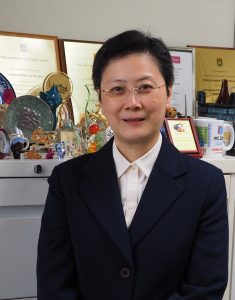
Wing-Wah YAM
Chair Professor
University of Hong Kong
From Discrete Metal Complexes to Ensembles and Assemblies for Sensing, Molecular Imaging and Bioassays
Recent works in our laboratory have shown that novel luminescent metal-based molecular and supramolecular materials could be assembled through the use of various metal-ligand chromophoric building blocks. In this presentation, various design and synthetic strategies, together with the successful isolation of new classes of complexes of selected metals, will be described. A systematic study of the electronic spectroscopy of the newly synthesized metal complex systems has provided fundamental understanding on the spectroscopic and luminescence origin as well as the structure-property relationship of these complexes. Through a fine control of the interplay amongst various coordination motifs, electrostatic assembly and non-covalent metal-metal, π-π and hydrophobic interactions, new strategies toward the rational design of luminescent metal-ligand chromophoric ensembles and assemblies that would lead to changes in the absorption and emission characteristics and potential applications and functions in luminescence sensing, bioassays and molecular imaging, have been made.
Professor Vivian W.-W. Yam is the Chair Professor of Chemistry and Philip Wong Wilson Wong Professor in Chemistry and Energy at The University of Hong Kong. She received both her BSc(Hons) and PhD from The University of Hong Kong. She was elected to Member of Chinese Academy of Sciences, International Member (Foreign Associate) of US National Academy of Sciences, Foreign Member of Academia Europaea, Fellow of TWAS and Founding Member of Hong Kong Academy of Sciences. She was Laureate of the 2011 L’Oréal-UNESCO For Women in Science Award. Her research interests include inorganic/organometallic chemistry, supramolecular chemistry, photophysics and photochemistry, and metal-based molecular functional materials for sensing, organic optoelectronics and energy research.
Institute of Molecular Functional Materials and Department of Chemistry, The University of Hong Kong, Pokfulam Road, Hong Kong, P R China
Email: wwyam@hku.hk
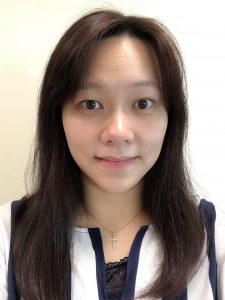
Pui-Chi LO
Associate Professor
City University of Hong Kong
Fe3+-Driven Assembly of Catalase-Like Supramolecular Photosensitizing Nanozymes for Combating Hypoxic Tumor
Photodynamic therapy (PDT) has emerged as a compelling treatment modality for a range of superficial and localized cancer.1 It involves excitation of a photosensitizer through light irradiation followed by the generation of reactive oxygen species, in particular singlet oxygen, to cause cellular damage at the tumor site. However, PDT still suffers from two major hurdles that limit its clinical application, including the low selectivity of the photosensitizers toward cancer cells and the insufficient oxygen concentration at hypoxic tumor. Being inspired by the naturally occurring catalases which can convert H2O2 into water and oxygen via the Fenton reaction, we report herein a facile approach to assemble catalase-like photosensitizing nanozymes with a self-oxygen-supplying ability.2 The process involved Fe3+-driven self-assembly of fluorenylmethyloxycarbonyl-protected cysteine (Fmoc-Cys) in the presence of a zinc(II) phthalocyanine-based photosensitizer (ZnPc) and the hypoxia-inducible factor 1 (HIF-1) inhibitor acriflavine (ACF). The nanovesicles, namely Fmoc-Cys/Fe@Pc and Fmoc-Cys/Fe@Pc/ACF were prepared, which could be disassembled intracellularly. The released Fe3+ could catalyze the transformation of H2O2 enriched in cancer cells to oxygen efficiently, thereby ameliorating the hypoxic condition and promoting the photosensitizing activity of the released ZnPc. With an additional therapeutic component, Fmoc-Cys/Fe@Pc/ACF exhibited higher in vitro and in vivo photodynamic activities than Fmoc-Cys/Fe@Pc, demonstrating the synergistic effect of ZnPc and ACF.
Acknowledgement
This work was supported by a grant from the Research Grants Council of the Hong Kong Special Administrative Region (Project No. 11300719).
References
- Dolmans DEJGJ, Fukumura D, Jain RK, Nat. Rev. Cancer 2003, 3, 380-387.
- Li Y, Sun P, Zhao L, Yan X, Ng DKP, Lo PC, Angew. Chem. Int. Ed. 2020, 59, 23228-23238.
Pui-Chi (Gigi) Lo obtained her BSc and PhD degrees from The Chinese University of Hong Kong. After staying there for a year as a Postdoctoral Fellow, she received postdoctoral training in Ontario Cancer Institute in the group of Gang Zheng. She was appointed as a Research Assistant Professor in the Department of Chemistry of her alma mater in 2009 and moved to the Department of Biomedical Sciences of the City University of Hong Kong as an Assistant Professor in 2015. She has just been substantiated and promoted to Associate Professor in July 2021. Her research interests focus on the development of novel molecular and nano theranostic agents for cancer imaging and therapy.
Department of Biomedical Sciences, City University of Hong Kong, Tat Chee Avenue, Kowloon, Hong Kong, China
E-mail:gigi.lo@cityu.edu.edu.hk
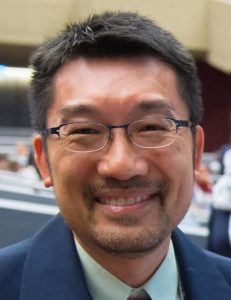
Richard Y.T. KAO
Associate Professor
University of Hong Kong
An Overlooked Dark Side of Antibiotics
Antibiotics have been the major weaponry of mankind for combating bacterial infection since the discovery of penicillin almost a century ago. Due to widely disseminated antibiotic resistance (AR) and pharmacokinetics/pharmacodynamics properties of different antibiotics, invading bacteria are frequently encountering subinhibitory concentrations of the administered antibiotics during treatments. Recent research has shown that some antibiotics at their subinhibitory concentrations may activate the expression of certain virulence factors of the bacteria and may enhance their pathogenicity. To investigate whether the administration of certain antibiotics will induce virulence in S. aureus and worsen the outcome under in vivo conditions, we tested a number of major classes of antibiotics in mice staphylococcal peritonitis and bacteremia models. Our study has illustrated that β-lactam antibiotics and tetracyclines at subinhibitory concentrations induced the expression of multiple surface-associated virulence factors and secreted toxins in vitro and aggravated infection by inducing staphylococcal virulence in vivo.
References
- Shang W, Rao Y, Zheng Y, Yang Y, Hu Q, Hu Z, et al. beta-Lactam Antibiotics Enhance the Pathogenicity of Methicillin-Resistant Staphylococcus aureus via SarA-Controlled Lipoprotein-Like Cluster Expression. mBio. 2019;10(3).
- Gao P, Ho PL, Yan B, Sze KH, Davies J, Kao RYT. Suppression of Staphylococcus aureus virulence by a small-molecule compound. Proc Natl Acad Sci U S A. 2018;115(31):8003-8. doi: 10.1073/pnas.1720520115.
- Yamaki J, Synold T, Wong-Beringer A. Tigecycline induction of phenol-soluble modulins by invasive methicillin-resistant Staphylococcus aureus strains. Antimicrob Agents Chemother. 2013;57(9):4562-5.
- Stevens DL, Ma Y, Salmi DB, McIndoo E, Wallace RJ, Bryant AE. Impact of antibiotics on expression of virulence-associated exotoxin genes in methicillin-sensitive and methicillin-resistant Staphylococcus aureus. J Infect Dis. 2007;195(2):202-11.
- Dumitrescu O, Boisset S, Badiou C, Bes M, Benito Y, Reverdy ME, et al. Effect of antibiotics on Staphylococcus aureus producing Panton-Valentine leukocidin. Antimicrob Agents Chemother. 2007;51(4):1515-9.
Dr. Kao received his Ph. D. in Microbiology in 1999 from UBC under the supervision of Professor Julian Davies and subsequent postdoctoral training at Harvard Medical School from 1999-2001. He joined the University of Hong Kong in 2001 as a Research Assistant Professor, first in HKU-Pasture Research Center, and later in the Department of Microbiology. He is now a tenured Associate Professor in the Department of Microbiology, Li Ka Shing Faculty of Medicine, and a Member of the State Key Laboratory of Emerging Infectious Diseases at HKU.
Dr. Kao’s research focuses on the application of chemical genetics in infectious diseases. His work on SARS-associated coronavirus (SARS-CoV), which was published in Chemistry & Biology in 2004, has established the world’s first model of chemical genetics in viruses and illustrated that chemical genetic approach could be employed to probe most, if not all, druggable targets of a pathogenic virus. Dr. Kao’s team also employed similar approach to identify new druggable targets in influenza viruses and published in Nature Biotechnology in 2010 an article detailing the groundbreaking discovery of influenza A nucleoprotein as a novel druggable antiviral target and a compound which they named nucleozin as a potent antagonist of the nucleoprotein. Most recently, Dr. Kao has extended his chemical genetic studies to virulence and antibiotics resistance in bacteria and has illustrated the potential use of anti-virulence compounds to treat MRSA infections. The research results have been published in top microbiology journals Frontiers in Microbiology, mBio, and PNAS in 2016, 2017, 2018 respectively. Dr. Kao received the Innovation Academy Award from International Consortium of Prevention and Control of Infection (ICPIC) in Geneva, Switzerland in 2017. Most recently, Dr. Kao has received the 2019 State Scientific and Technological Progress Award (Second-class).
Department of Microbiology, Li Ka Shing Faculty of Medicine, The University of Hong Kong
Email: rytkao@hku.hk
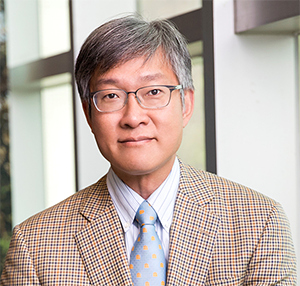
Kam-Bo WONG
Professor
Chinese University of Hong Kong
Smuggling Toxic Nickel to the Active Site of Urease
Urease is a nickel-containing metalloenzyme that catalyzes the hydrolysis of urea into ammonia and carbon dioxide. Biosynthesis of active urease requires a maturation process involving insertion of two nickel ions to the active site of urease. Nickel ion, being a competitive ion at the top of the Irving-Williams series, is cytotoxic because it can displace weaker ions such as magnesium found in cellular enzymes. Correct metalation of urease is ensured by specific protein-protein interactions among metallochaperones on the nickel delivery pathway. Our research group have determined a number of protein complexes involved in the urease maturation pathway and combined with mutagenesis and biochemical analysis (1-3), we have elucidated the mechanism how the toxic nickel is ‘smuggled’ to the active site of urease without releasing the “free” toxic metal to the cytoplasm.
Reference
- Fong YH, Wong HC, Chuck CP, Chen YW, Sun H, and Wong KB “Assembly of preactivation complex for urease maturation in Helicobacter pylori: crystal structure of UreF-UreH protein complex.” J. Biol. Chem., 2011, 50, 43241-43249.
- Fong YH, Wong HC, Yuen MH, Lau PH, Chen YW, Wong KB “Structure of UreG/UreF/UreH Complex Reveals How Urease Accessory Proteins Facilitate Maturation of Helicobacter pylori Urease.” PLoS Biol., 2013, 11, e1001678.
- Yuen MH, Fong YH, Nim YS, Lau PH, Wong KB “Structural insights into how GTP-dependent conformational changes in a metallochaperone UreG facilitate urease maturation.” Proc. Nat. Acad. Sci. USA, 2017, 114, E10890-98
Prof. Kam-Bo Wong is a structural biologist who uses a multi-disciplinary approach to understand the molecular mechanism of life. He obtained his B.Sc. and M.Phil. in Biochemistry at The Chinese University of Hong Kong and obtained a Croucher Foundation Scholarship to study Ph.D. at the Unviersity of Cambridge in the research group of Prof. Alan Fersht. After post-doc training with Prof. Fersht at Cambridge and Prof. Valerie Daggett at the Unviersity of Washington, he joined The Chinese University of Hong Kong in 1999. His current research interest is on the mechanism of the urease maturation pathway. He also actively collaboration with plant biologists to understand specific protein-protein interactions determine protein trafficking in plant cells.
School of Life Sciences, Centre for Protein Science and Crystallography, State Key Laboratory of Agrobiotechnology, The Chinese University of Hong Kong
E-mail: kbwong@cuhk.edu.hk
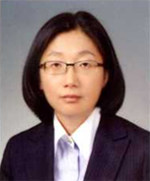
Sun Hee KIM
Adjunct Professor
Korea Basic Science Institute
Applications of Advanced EPR Spectroscopy in Bio-inorganic Chemistry
EPR spectroscopy has been proven to play a significant role to characterize geometrical and electronic structures of metal sites in the field of bio-inorganic chemistry. Our group utilizes advanced EPR spectroscopy (i.e. multi-frequency, multi-technique pulse EPR) to elucidate molecular mechanisms of bio-catalysts by placing an emphasis on revealing structures of intermediates of interesting catalytic reactions as seen in nature. In this talk, I will present a couple of examples of application of advanced EPR spectroscopy in bio-inorganic chemistry, in particular, the recent results from our group, such as 1) metal ion effects on amyloid fibrilization relevant to Alzheimer’s disease and 2) electronic structures of high-valent metal-oxo complexes, intermediates in difficult catalytic reactions inspired by nature.
Advanced EPR spectroscopy provides accurate spin Hamiltonian values which can be used for in-depth analysis to explain the electronic structures of short-lived intermediates species, hence may deepen our knowledge for understanding working mechanisms of the interesting reactions.
References
- “EPR Spectroscopy Elucidates the Electronic Structure of [FeV(O)(TAML)] Complexes”, Chem. Front. 2021, 8, 3775-3783
- “Spectroscopic Capture of a Low-spin Mn(IV)-oxo Species in Ni-Mn3O4 Nanoparticles during Water Oxidation Catalysis”, Commun. 2020, 11, 5230
- “Advanced EPR studies of a Ternary Complex of Copper, Amyloid-β and a Chemical Regulator”, Chem. 2018, 57, 12665-12670
- “Selective Electrocatalytic Reduction of Nitrite to Dinitrogen based on Decoupled Proton-Electron Transfer”, Am. Chem. Soc. 2018, 140, 2012-2015.
- “Mechanistic Investigation of Water Oxidation Catalyzed by Uniform, Assembled MnO Nanoparticles”. Am. Chem. Soc. 2017, 139, 2277-2285.
- “Multi-frequency, Multi-technique Pulsed EPR Investigation of the Copper Binding Site of Murine Amyloid b Peptide”. Chem. Int. Ed. 2015, 54, 1561-1564.
- “Pulsed ENDOR Characterization of Copper Coordination of an Amyloid bPeptide Relevant to Alzheimer’s Disease”. Chem. Int. Ed. 2013, 52, 1136-1142.
- “Structural and Conformational Dynamics of Self-Assembling Bioactive b- Sheet Peptide Nanostructures Decorated with Multivalent RNA-binding Peptides”. Am. Chem. Soc.2012, 134, 16047-16053.
Sun Hee Kim is a principal researcher in Korea Basic Science Institute and adjunct professor at Ewha Womans University. She earned her B.S./M.S. degrees at Sung Kyun Kwan University in Korea and moved to USA to study her Ph.D at University of California at Davis, working with R.David Britt, followed by postdoctoral studies with Brian M. Hoffman at Northwestern University.
Kim’s research interests are focused on the study of strutures of metal sites in biology and energy by utilizing advaned EPR spectroscoy.
Korea Basic Science Institute
E-mail: shkim7@kbsi.re.kr
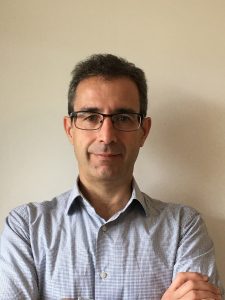
Ramon VILAR
Professor
Imperial College London
Targeting and Imaging G-Quadruplex DNA with Metal Complexes
With the increasing evidence that non-canonical DNA structures (such as three- and four-stranded helical DNA structures) can play key biological roles, there is increasing interest in developing small molecules that can interact selectively with a given topology. In particular, over the past few years there have been several studies aimed at designing and developing metal complexes as selective binders of guanine-quadruplex DNA (G4 DNA).1,2 These non-canonical DNA structures have been proposed to have important biological functions in transcription, telomere maintenance and replication, and therefore have been identified as attractive anticancer drug targets.3
Over the past few years, our group has developed several families of metal complexes with high affinity and selectivity for quadruplexes.4-7 One of the key features that makes metal complexes attractive as DNA binders is the possibility of easily fine-tuning their properties by changing the metal center. Herein, we present the development of a series of organic and metal-organic probes that can be successfully used to interact with and image quadruplex DNA. One of the aims of our recent work has been to demonstrate that G4 DNA binders can target such structures in live cells8,9 as well as show their biodistribution in vivo. Another area of recent interest has been the development of systems that can ‘trigger’ the activity of a G4 binder via external stimuli such as light, redox changes or enzymes.6,7
References
- N. Georgiades, N.H. Abd Karim, K. Suntharalingam, R. Vilar, Angew. Chem. Int. Ed. 2010, 49, 4020
- Vilar, Met. Ions Life Sci. 2018, 18, 325 (Editors: Astrid Sigel, Helmut Sigel, Eva Freisinger, and Roland K. O. Sigel)
- Neidle, Nat. Rev. Chem. 2017, 1, 10
- E. Reed, A. Arola Arnal, S. Neidle, R. Vilar, J. Am. Chem. Soc., 2006, 128, 5992
- -Q. Zhou, T.-C. Liao, Z.-Q. Li, J. Gonzalez-Garcia, M. Reynolds,M. Zou, R. Vilar, Chem. Eur. J. 2017, 23, 4713S.
- Bandeira, J. Gonzalez-Garcia, E. Pensa, T. Albrecht, R. Vilar, Angew. Chem. Int. Ed. 2018, 57, 310-313
- Kench, P. A. Summers, M. K. Kuimova, J. E. M. Lewis, R. Vilar, Angew. Chem. Int. Ed. 2021, 60, 10928–10934
- Shivalingam, M. A. Izquierdo, A. Le Marois, A. Vyšniauskas, K. Suhling, M. K. Kuimova and R Vilar, Nature Comm. 2015, 6, 8178
- A. Summers, B.W. Lewis, J. Gonzalez-Garcia, R.M. Porreca, A.H. M. Lim, P. Cadinu, N. Martin-Pintado, D.J. Mann, J.B. Edel, J.B. Vannier, M.K. Kuimova, R. Vilar, Nat. Commun. 2021, 12, 162
Professor Ramon Vilar is Chair of Medicinal Inorganic Chemistry (since 2011) and Director of Research (since 2015) in the Chemistry Deparment, and Director of the Institute of Chemical Biology (since 2019) at Imperial College London (UK). His research focusses on using metal complexes and supramolecular assemblies as probes to unveil the chemical biology of nucleic acids (particularly G-quadruplexes) and proteins. His group is also interested in studying the therapeutic properties of metal complexes against cancer as well as developing nanoplatforms for drug delivery.
Faculty of Natural Sciences, Department of Chemistry, Imperial College London
E-mail: r.vilar@imperial.ac.uk
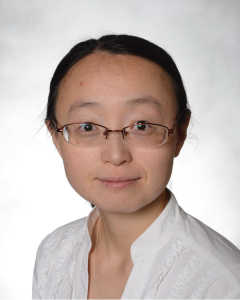
Ying LI
Assistant Professor
University of Hong Kong
Chemical Approaches to Study RNA Localization
RNAs play vital roles in cell survival. Rising evidences suggest RNAs need to be at certain locations inside cells during specific times to execute corresponding biological functions. To assay cellular RNA localizations on a transcriptome-wide level unbiasedly, we developed a light-mediated RNA proximity labelling method, which was extended to protein tagging. A series of singlet oxygen generator were designed and synthesized. Their capability to label adjacent biomolecules through spatially-restricted oxidation under visible light was validated using fluorescence confocal microscopy. Western blot and RT-qPCR were performed to verify the desirable spatial resolution through enriching biotinylated RNAs and proteins. We anticipate this new technique will lead to unprecedented biological insights.
References
- Liang, J.; Jia, H.; Li, L.; Li, X.; Li, Y.* Org. Lett. 2021, 23, 4640–4644.
- Li, L.; Liang, J.; Luo, H.; Tam, K. M.; Tse, E. C. M.*; Li, Y.* Chem. Comm., 2019, 55, 12340–12343.
Dr. Ying LI is an assistant professor in department of chemistry at The University of Hong Kong, whose research topics including RNA localization, RNA modification, RNA-protein interaction and Biomaterials. An interdisciplinary lab that develops new analytical tools to interrogate biological processes at molecular levels. To do so, she takes a multidimensional approach that integrates organic chemistry, cell biology, biochemistry, spectroscopy, and advanced microscopy.
Department of Chemistry, The University of Hong Kong
E-mail: yingli0e@hku.hk
Day 2
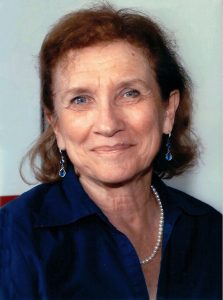
Marcetta Y. DARENSBOURG
Professor
Texas A&M University
Bioorganometallic Enzyme Active Sites as Inspiration for Synthetic Design
The merger of classical organometallic structure and bonding principles with biological ligands offers an almost unlimited chemical design space for potential catalysts, particularly targeting features that inform on the makeup and mechanisms of the active sites in redox-processing enzymes. The goal is to uncover Nature’s strategies or “tricking” of abundant first row transition metals into providing accessibility to 2-electron processes that expensive heavy metals such as platinum, necessary for electrolytic and fuel cell electrodes, perform with ease. Nature’s way positions two or more metals in close proximity, typically S-bridged, such that the burden of charge build up as an election is added or removed from the unit is shared by both or multiple metals. In addition the facilitation of redox activity in first-row transition metal complexes by the delocalization effects of ligands is a well-accepted axiom of coordination chemistry. In this regard nitrosyl (NO) and dithiolene ligands have served as paradigms for over five decades. The [MoCu]-Carbon Monoxide Dehydrogenase, CODH) is festooned with an additional redox-active, “non-innocent” dithiolene ligand. In this lecture we will quickly review hydrogenase biomimetics that lead to recent studies of bio-inspired hybrid ligand/metal combinations that demonstrate stability in multiple redox levels. Specifically to be described are sulfur-bridged Fe-Fe’ and Fe-Ni bimetallics that incorporate redox active ligands on each metal, NO on iron and dithiolene on nickel; and a NO-rich [N2S2Fe(NO)•Fe(NO)2]+/0/- complex that inspired a class of H2ase-biomimetics. Good reversibility in the two redox events of the heterobimetallics suggested chemical explorations and isolation of the reduced and the oxidized Fe-Ni complexes in unusual spin states.
References
The Roles of Chalcogenides in O2 Protection of H2ase Active Sites. Xuemei Yang and
Marcetta Y. Darensbourg, Chemical Science 2020, 11, 9366-9377
Interplay of hemilability and redox activity in models of hydrogenase active sites. Shengda Ding, Pokhraj Ghosh, Marcetta Y. Darensbourg, Michael B. Hall. PNAS, 2017, 114 (46).
Professor Marcetta Y. Darensbourg is a native of Knox County, Kentucky, USA, with undergraduate education at Union College, Barbourville, KY. and Ph.D. from the University of Illinois. Following academic posts at Vassar College and Tulane University, she joined the faculty at Texas A&M University, College Station, TX, in 1982. She holds the title of Distinguished Professor of Chemistry. Trained as an organometallic chemist in the laboratories of Professors Theodore L. Brown and Earl Muetterties (Cornell), and with initial independent research in low valent transition metal carbonyls and hydrides, she perceived the possibility of metal hydrides in nature, specifically as intermediates in hydrogenase enzymes—experiencing delight when small organo-iron fragments were definitively characterized within them. Such inspiration lured her further into an emerging field of bioorganometallic chemistry, ripe for integrating insights from homogeneous catalysis and metalloenzymes. She has led in the development of synthetic analogues of the diiron hydrogenase active site and the insight they bring to the catalytic mechanism of such natural fuel cell catalysts. Metalloenzyme active sites that catalyze carbon-carbon coupling reactions but use abundant metals such as nickel also inspire her research activities. Fundamental studies of nitric oxide in combination with iron overlap into medicinal applications.
She was an inaugural, 2009, Fellow of the American Chemical Society. Dr. Darensbourg was also elected as a fellow of the American Academy of Arts and Sciences in 2011, to the Royal Society of Chemistry in 2014, the National Academy of Sciences in 2017. She has received awards such as the Willard Gibbs Medal, the American Chemical Society Award for Distinguished Service in the Advancement of Inorganic Chemistry, the J.C. Bailar Lectureship and F. Basolo Award, and she was the 2018 SEC Professor of the Year. In 2020 she was awarded the Proctor Prize of Sigma Xi.
Department of Chemistry, Texas A&M University College Station TX
Email: Marcetta@chem.tamu.edu
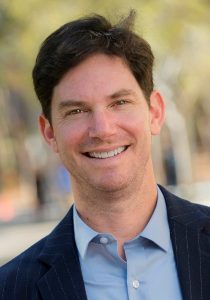
Seth M. COHEN
Professor
University of California, San Diego
Metallofragments for Fragment-Based Drug Discovery
Fragment-based drug discovery (FBDD) is an increasingly important strategy for the discovery of new small molecule therapeutics. FBDD campaigns generally use fragment libraries consisting of a few hundred to a few thousand organic molecules, with molecular weights typically <300 Da. Although chemically diverse, the fragments in these libraries are often topologically restricted to 1-dimensional (1D, linear) and 2-dimensional (2D, planar) shapes. The development of 3-dimensional (3D) organic fragments has been limited, despite studies showing that 3D fragments can produce very useful starting scaffolds. This presentation will describe efforts to advance the field of FBDD by developing fragment libraries based on small metal complexes. As demonstrated by our published studies, metallofragments can be prepared with a wide variety of 3D shapes, populating a diverse topological space not readily achieved by organic molecules. Their shape diversity has enabled hit identification against a wide range of validated enzyme targets, including two antiviral targets: influenza endonuclease and the main protease of SARS-CoV-2. Our findings to date suggest that metallofragment libraries for FBDD will unlock new opportunities in drug discovery to tackle challenging targets in a fundamentally new way.
References
- Johannes Karges and Seth M. Cohen, “Metal Complexes as Antiviral Agents for SARS-CoV-2″ ChemBioChem. 2021, 22, 2600-2607.
- Johannes Karges, Mark Kalaj, Milan Gembicky, and Seth M. Cohen, “Re(I) Tricarbonyl Complexes as Coordinate Covalent Inhibitors for the SARS-CoV-2 Main Cysteine Protease” Angew. Chem. Intl. Ed. 2021, 60, 10716-10723.
- Kathleen E. Prosser, Ryjul W. Stokes, and Seth M. Cohen, “Evaluation of 3-Dimensionality in Existing Approved and Experimental Drug Space” ACS Med. Chem. Lett. 2020, 11, 1292-1298.
- Christine N. Morrison, Kathleen E. Prosser, Ryjul W. Stokes, Anna Cordes, Nils Metzler-Nolte, and Seth M. Cohen, “Expanding Medicinal Chemistry into 3D Space: Metallofragments as 3D Scaffolds for Fragment-Based Drug Discovery” Chem. Sci. 2020, 11, 1216-1225.
After high school, he moved to the San Francisco bay area to attend Stanford University (Go Cardinal!) where he obtained a Bachelor of Science degree in Chemistry and a Bachelor of Arts degree in Political Science. Upon completion of his undergraduate education he moved across the bay to attend graduate school at the University of California, Berkeley where he studied under the guidance of Prof. Kenneth N. Raymond. After completing his Ph.D. at U.C. Berkeley, he moved to Boston, to perform postdoctoral research in the laboratory of Prof. Stephen J. Lippard at the Massachusetts Institute of Technology. After about two and a half years in Boston he moved to his present position at the University of California, San Diego (Go Tritons!). On July 1, 2011, he was promoted to the position of Professor, and served as Chair of the Department of Chemistry and Biochemistry at U.C. San Diego from July 2012 to June 2015.
Department of Chemistry and Biochemistry, U.C. San Diego, La Jolla, CA 92093
E-mail: scohen@ucsd.edu
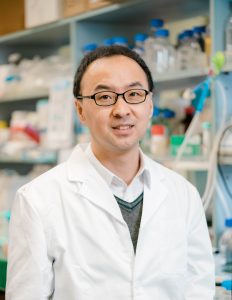
Xuechen LI
Professor
University of Hong Kong
Towards Synthetic Biologics
Bio-macromolecules, including nucleic acids, proteins and carbohydrates, are major players at the chemistry-biology interface, and they have emerged as a class of therapeutic biologics. As compared to the expression systems to generate biologics, chemical synthesis of these bio-macromolecules promises to overcome the limitation of biologically controlled methods for their production, for instance flexible incorporation of unnatural elements. Over the past decade at the University of Hong Kong, our laboratory has developed several innovative protein chemical synthesis methods for generating “synthetic biologics”. These synthetic proteins enable us to investigate their biological functions and explore their therapeutic applications.
References
- Liu, H.; Li, X., Acc. Chem. Res. 2018, 51, 1643
- Tan, Y.; Wu, H.; Wei, T. J. Am. Chem. Soc. 2020, 142, 48 (perspective)
- Wu, H.; Zhang, Y.; Li, Y.; Wu, J. J. Am. Chem. Soc. 2021, 143, 7808
Professor Xuechen Li obtained his Ph.D from Harvard University and conducted postdoctoral research at Memorial Sloan Kettering Cancer Center. He Joined the HKU Department of Chemsitry in 2009, and was promoted to Professor in 2018. He received the Rao Makineni Award by American Peptide Society in 2019.
Department of Chemistry, The University of Hong Kong
Email: xuechenl@hku.hk
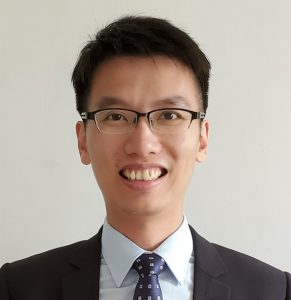
Clive Yik-Sham CHEUNG
Assistant Professor
University of Hong Kong
Integrated Chemical Biology Approach to Study Roles of Metals in Biology and to Discover New Covalent Drug Lead Compounds
Chemical biology is an interdisciplinary research area, applying chemical tools and technologies to study and/or manipulate biological systems. Two of the key technologies are molecular imaging and chemoproteomics, which enable us to real-time monitor biological events and profile protein targets with specific functions respectively.
Fluorescent probes are known to be important tools for molecular imaging of biomolecules/ions. Recent advances in the field include the development of new generation of probes for achieving good quantification and spatial resolution of biomolecules/ions. In this talk, I will illustrate this using my previous work on ratiometric FRET Cu(I) probe1 and Cu(I)-directed acyl imidazole probe,2 which allows internal self-calibration for better quantification and labeling of Cu(I) hotspots for preserving the spatial information of Cu(I) ion respectively. These are important for understanding changes in labile Cu(I) pools in cells under oncogenic transformations and the different Cu homeostasis in different brain cells.
Chemoproteomics has demonstrated great impact in drug research and discovery. By coupling with gel-based experiments and high resolution mass spectrometry (MS), new druggable hotspots and covalent drugs with defined protein targets and binding sites can be identified. I will use my previous work on EN6, a cysteine-reactive compound which can activate autophagy and inhibit mTORC1 signaling through covalent binding of Cys277 on ATP6V1A,3 and ongoing cancer research of my lab as examples to showcase the potential of chemoproteomics in studying metals in biology and medicine.
References
- Chung, C. Y.-S.,† Posimo, J. M.,† Lee, S.,† Tsang, T.,† Davis, J. M., Brady, D. C., & Chang, C. J. Proceedings of the National Academy of Sciences 2019, 116(37), 18285-18294.
- Lee, S.,† Chung, C. Y.,† Liu, P., Craciun, L., Nishikawa, Y., Bruemmer, K. J., Hamachi, I., Saijo, K., Miller, E. W., & Chang, C. J. Journal of the American Chemical Society 2020, 142(35), 14993–15003.
- Chung, C. Y.-S.,† Shin, H. R.,† Berdan, C. A., Ford, B., Ward, C. C., Olzmann, J. A., Zoncu, R., & Nomura, D. K. Nature Chemical Biology 2019, 15(8), 776–785.
Dr. Clive Yik-Sham CHUNG received first-class honors BSc degree in chemistry and PhD with Prof. Vivian Wing-Wah Yam at The University of Hong Kong (HKU) in 2008 and 2013 respectively. Then, he did his postdoctoral training with Prof. Chi-Ming Che at HKU on inorganic medicines and drug delivery. In 2016, he received Croucher Postdoctoral Fellowship and moved to UC Berkeley, working with Prof Christopher J. Chang on molecular imaging to unravel roles of reactive oxygen species (ROS) and copper in biology. In 2018, he joined Prof. Daniel K. Nomura in Novartis-Berkeley Center for Proteomics and Chemistry Technologies, and discovered new covalent drug lead compound that can modulate autophagy and mTORC1 signaling. In May 2020, Dr Chung joined the School of Biomedical Sciences and Department of Pathology, HKU, as an Assistant Professor.
His research interest is on chemical biology, particularly on developing novel chemical compounds and technology to study underexplored but important redox signaling. His lab is also working on new covalent drug lead compounds for cancer therapy through specific targeting cancer-associated proteins.
School of Biomedical Sciences, and Department of Pathology, Li Ka Shing Faculty of Medicine, The University of Hong Kong, Pokfulam Road, Hong Kong, P. R. China
E-mail:cyschung@hku.hk
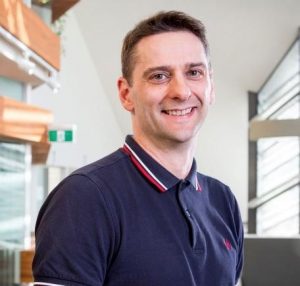
Paul S. DONNELLY
Professor
University of Melbourne
Radioactive Copper Complexes for Diagnostic Imaging and Therapy of Cancer
Molecules that bind to specific targets or receptors present on tumour cells that have been radiolabelled with positron-emitting radionuclides can be used for diagnostic imaging of cancer using Positron Emission Tomography (PET) imaging. Diagnostic PET imaging can be used to identify patients that would be suitable for targeted radionuclide therapy with molecules radiolabelled with either a- or b–-emitting radionuclides.
This presentation will discuss approaches to attach positron-emitting copper-64 to peptides, peptido-mimetics and antibodies to provide new PET imaging agents for a range of different cancers. These new molecules can be used to diagnose disease and select patients for targeted radionuclide therapy with the same molecule radiolabelled with the b–-emitting copper-67 variant. Several different approaches will be presented aimed at making new imaging and therapeutic agents for neuroendocrine tumours, prostate cancer and breast cancer.
A final aspect of the presentation will focus on the potential for metal complexes to be used for the diagnosis and treatment of neurodegenerative diseases.
Prof. Paul S. Donnelly is based at the School of Chemistry and Bio21 Institute at the University of Melbourne. His research includes the synthesis of metal complexes for use in imaging and therapy as well as the study of the role of metal ions in biology. He has particular interests in the potential to use metal complexes for the treatment of a range of cancers and neurodegenerative diseases including Motor Neuron Disease and Alzheimer’s Disease.
School of Chemistry and Bio21 Molecular Science and Biotechnology Institute, University of Melbourne, Melbourne, Australia
E-mail:pauld@unimelb.edu.au

Peter FALLER
Professor
University of Strasbourg
Copper-Chemistry in Biology and Medicine
Copper ions are essential for almost all living beings and mainly occur in the two redox states Cu(I) and Cu(II). Cu(I/II) are almost exclusively coordinated to binding sites in proteins with high affinity enabling a tight control of its chemistry. Cu ions bound outside the physiological binding sites are potentially dangerous, often via its high capacity to activate O2 to form reactive oxygen species. Several diseases have been linked to a dyshomeostasis of copper such as Wilson’s and Menkes genetic disorders, Alzheimer’s disease, cancer etc… Thus, interfering in copper metabolism via small ligands is a widely investigated therapeutic approach and, in some cases like Wilson disease, routinely used in clinics.
During the last years we worked on the Cu chemistry of several biological relevant peptides/proteins, chelators and complexes. This includes the amyloid-β peptide related to Alzheimer’s disease (1 for recent review), several classical ligand types (e.g. thiosemicarbazones) studied for their anticancer or antimicrobial applications (2) and the development of a selective Cu(II)-sensor for biological applications (3).
In all this cases, the design of a Cu-ligand to control the Cu-chemistry in a biological environment is extremely challenging (2,4). Main issues are the interdependent parameters of stability constants, redox potential/reactivity, selectivity against other essential metal ions, the very different coordination chemistry between Cu(I) and (II), and metal exchange rates with biomolecules. General insights in this area will be discussed.
References
- Atrián-Blasco E, et al. Coord Chem Rev. 2018, 375, 38-55
- Santoro A, et al. Angew Chem Int Ed Engl. 2020, 59, 7830-7835
- Falcone E. et al. Chem Commun. 2020, 56, 4797-4800
- Falcone E. et al. Coord Chem Rev. 2021, 433, 213727
Peter Faller is Professor in chemistry at the University of Strasbourg (France) and group leader at the Institute of Chemistry (UMR 7177). He studied at the University of Zürich (Switzerland) earning a PhD in biochemistry with Prof. M. Vasak (1998). He did his postdoctoral studies on photosystem II at the CEA near Paris (France) with Dr.A.W. Rutherford and in Freiburg (Germany) with Dr. A. Krieger-Liszkay. In 2003 he was appointed professor Coordination Chemistry Laboratory of the CNRS and University of Toulouse (France), mainly working on the role of Cu/Zn/Fe ions in the aggregation and toxicity of the peptide amyloid-ß linked to Alzheimer’s disease. In 2015 he moved to the University Strasbourg. Ongoing research projects of his group are in bioinorganic and medicinal chemistry, related to amyloidogenic peptides, copper(II) sensors, anticancer and -microbial Cu- and Fe-complexes, peptide self-assembly and peptides-metal-complexes.
Institut de Chimie, UMR 7177, University of Strasbourg-CNRS, 4 rue Blaise Pascal, 67000 Strasbourg, France.
E-mail: pfaller@unistra.fr
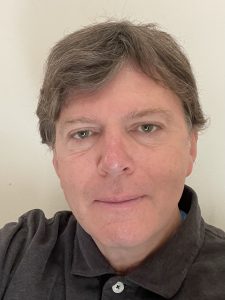
Christopher J. SCHOFIELD
Professor
University of Oxford
Mechanisms and Inhibition of Metallo-Enzymes involved in Antibiotic Biosynthesis and Resistance
Penicillins and successive generations of beta-lactam antibacterials are medicines of immense importance. Metallo-enzymes play key roles in their biosynthesis and in resistance to them. The lecture will describe recent mechanistic and structural studies on Fe(II) dependent oxygenases and isopencillin N synthase that are involved in beta-lactam biosynthesis, including using time-resolved X-ray free electron laser studies that reveal unexpected insight and intermediates. It will also describe mechanistic studies on Zn(II) dependent metallo beta-lactamases, which are an increasing cause of resistance. The lecture will illustrate how mechanistic insight was used to develop new types of inhibitor for use in combatting antibacterial resistance and the development of drugs in completely different fields.
References
- Mechanistic Insights into β-Lactamase-Catalysed Carbapenem Degradation Through Product Characterisation, Sci Rep. 2019 9, 13608, doi.10.1038/s41598-019-49264-0
- Molecular and cellular mechanisms of HIF prolyl hydroxylase inhibitors in clinical trials, Chem Sci, 2017, 8, 265-273, doi.10.1039/C7SC02103H
- Human oxygenase variants employing a single protein Fe(II) ligand are catalytically active. Angew Chem Int Ed, 2021, doi 10.1002/anie.202103711
Will morphing boron-based inhibitors beat the β-lactamases? Curr Opin Chem Biol, 2019, 50, 101-110, doi.10.1016/j.cbpa.2019.03.001
Chris Schofield studied for an undergraduate degree in chemistry at the University of Manchester Institute of Science and Technology. He moved to Oxford for DPhil studies with Jack Baldwin on the synthesis and biosynthesis of antibiotics. He subsequently became a Departmental Demonstrator in the Dyson Perrins Laboratory, and in 1990 Lecturer in Chemistry and Fellow of Hertford College. In 1998 he became Professor of Chemistry and he served as Head of Organic Chemistry from 2011 to 2021. He is a Fellow of the Royal Society and Head of Chemistry at the Ineos Oxford Institute for Antimicrobial Research.
His research group works at the interface of chemistry, biology and medicine. His work has opened up new fields in antibiotic research, oxygen sensing and gene regulation in organisms ranging from bacteria to plants and animals. His work has identified new opportunities for medicinal intervention that are being pursued by numerous academic and commercial laboratories.
Chemistry Research Laboratory, Department of Chemsitry and Ineos Oxford Instituet for Antimicrobial Research, Oxford, OX1 3TA, United Kingdom
Day 3
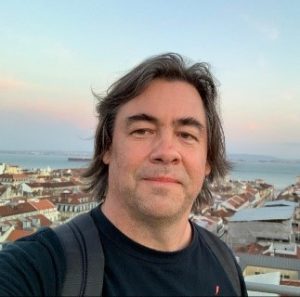
Alejandro J. VILA
Professor
University of Rosario
Metallo-β-Lactamases and a Tug-of-War for the Available Zinc at the Host-Pathogen Interface
Metallo-β-lactamases (MBLs) are Zn(II)-dependent β-lactamases that constitute the latest resistance mechanism of pathogenic and opportunistic bacteria against carbapenems, considered as last resort drugs. Zn(II) binding is critical in the bacterial periplasm, not only to activate these enzymes and provide resistance, but also to stabilize the protein scaffold. During infection, the immune system elicits a response that scavenges the available Zn(II), impacting in the activity of stability of these proteins, thus compromising bacterial survival. However, the activity and stability of these proteins in vitro does not necessarily correlate with those in the periplasm. We intend to fill the gap between in vitro and in vivo studies by means of an integrated approach.
These enzymes are continuously evolving under the evolutionary pressure exerted by the indiscriminate use of antibiotics. We have studied the biochemical and biophysical features modified by the effect of accumulating mutations during evolution, both in enzymes evolved in the laboratory, as well as to study natural allelic variants selected in clinical strains. This has allowed us to account for the epistatic interactions between mutations at a structural level.
We have also studied the natural evolutionary landscape of allelic variants of a clinically relevant lactamase (NDM), that has been shaped by Zn(II) deprivation conditions. Thus, natural NDM variants with enhanced Zn(II) binding affinity have been selected, overriding the most common evolutionary pressure acting on catalytic efficiency. We also found that this enzyme is being disseminated by being secreted into Outer Membrane Vesicles, that represent an additional evolutionary advantage and a new challenge.
References
- Mojica et al. Lancet Infect Dis, 2021, S1473-3099 30868-9.
- Rossi et al. Chemical Sci., 2021, 12, 2898-2908.
- Bahr et al. Chem Rev., 2021, 121, 7957-8094.
- López et al., Nat Commun. 2019, 10, 3617.
- Lisa et al. Nature Commun. 2017, 8, 53.
- González et al. Nature Chemical Biology, 2016, 12, 516-22.
- González et al. Mol.Biol. Evol., 2016, 33, 1768-76.
- González et al. Nature Chemical Biology, 2012, 8, 698-700.
Alejandro J. Vila was trained as a chemist at the University of Rosario in Argentina, where he received his PhD in synthetic organic chemistry in 1990. Then he was a postdoctoral fellow at the Department of Chemistry in the University of Florence, Italy with Ivano Bertini, where he worked in NMR of metalloproteins. In 1993 he started his independent career as Assistant Professor of Biophysics at the University of Rosario, studying the electronic structure of copper proteins. In 2001 he joined the Institute of Molecular and Cellular Biology of Rosario (IBR). He is the leader of the Metalloprotein lab, head of the Protein NMR Facility, Full Professor of Biophysics at the University of Rosario and Researcher of CONICET (the Argentinean Research Council). His lab studies metalloproteins (mostly zinc and copper), and metal ion homeostasis and trafficking. His group has elucidated the catalytic mechanism of zinc-dependent lactamases, designed inhibitors, and studied the impact of metal uptake in the periplasm on the activity and stability of these enzymes. He has received several awards, including the Howard Hughes Medical Institute International Research Fellowship, the John Simon Guggenheim Memorial Foundation, the E.P.Abraham Award, and the Ivano Bertini Award, for scientific achievements in copper research. Alejandro is not only passionate about metalloproteins, but also about literature, cooking, red wine and music.
Instituto de Biología Molecular y Celular de Rosario (IBR), CONICET – University of Rosario
E-mail: vila@ibr-conicet.gov.ar
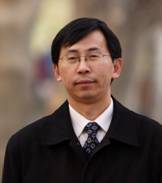
Shu-Hong YU
Professor
University of Science and Technology of China
Bio-Inspired Sustainable Structural Materials
Biominerals are well-known composites of inorganic and organic materials in the form of fascinating shapes and high ordered structures, which exist in Nature, for example, pearl, oyster shells, corals, ivory, sea urchin spines, cuttlefish bone, limpet teeth, magnetic crystals in bacteria, and human bones, created by living organisms. During the past few decades, it has been one of the hottest research subjects in materials chemistry and its cutting-edge fields to explore new bio-inspired strategies for the generation of materials with unique structural specialty and complexity. This lecture will present our recent advances on bio-inspired manufacturing of a family of bio-based structural materials with designed micro-/nano-scale structure and tunable surface chemistry and the macroscopic scale assemblies of the bio-based building blocks like cellulose nanofibers and other biomass particles with surface nanocrystallization. Especially, we will report our recent effort on how to realize the production of sustainable structural materials, such as synthetic nacre, cellulose nanofiber plates, nacre-inspired structural material, and regenerated isotropic wood. These sustainable bio-based structural materials prepared by bio-inspired manufacturing are emerging as a new material system, which holds the key to advance a global sustainability goal.
References
- Mao, L. B.; Gao, H. L.; Yao, H. B.; Liu, L. Cölfen, H. Liu, G. Chen, S. M. Li, S. K. Yan, Y. X. Liu, Y. Y.; Yu, S. H. Science 2016, 354:
- Yu, S. H.; Cölfen, H.; Tauer, K.; Antonietti, M. Mater. 2005, 4: 51.
- Yu, Z. L.; Yang, L.; Zhou, L. C.; Ma, Z. Y.; Zhu, Y. B.; Lu, Y.Y.; Qin, B.; Xing, W. Y.; Ma, T.; Li, S. C.; Gao, H. L.; Wu, H. A.; Yu, S. H. Adv. 2018, 4: aat7223.
- Gao, H. L.; Zhu, Y. B.; Mao, L. B.; Wang, F. C.; Luo, X. S.; Liu, Y. Y.; Lu, Y.; Pan, Z.; Ge, J.; Xu, L.; Shen, W.; Xu, W. H.; Wang, L. J.; Wu, H. A.; Yu, S. H. Commun. 2016, 7: 12920.
- Guan, Q. F.; Yang, H. B.; Han, Z. M.; Zhou, L. C.; Zhu, Y. B.; Ling, Z. C; Jiang, H. B.; Wang, P. F.; Ma, T.; Wu, H. A.; Yu, S. H. Adv. 2020, 6: aaz1114.
- Ge, J.; Shi, L. A.; Wang, Y. C.; Zhao, H. Y.; Yao, H. B.; Zhu, Y. B.; Zhang, Y.; Zhu, H. W.; Wu, H. A.; Yu, H. Nat. Nanotechnol. 2017, 12: 434.
- Guan, Q. F. ; Han, Z. M.; Luo, T. T.; Liang, H. W.; Chen, S. M.; Wang, G. S.; Yu, S. H. Sci. Rev. 2019, 6: 64.
- M. Chen, H. L. Gao, Y. B. Zhu, H. B. Yao, L. B. Mao, Q. Y. Song, J. Xia, Z. Pan, Z. He, H. A. Wu and S. H. Yu, Natl. Sci. Rev. 2018, 5: 703.
- Chen, S. M.; Gao, H. L.; Sun, X. H.; Ma, Z. Y.; Ma, T.; Xia, J.; Zhu, Y. B.; Zhao, R.; Yao, H. B.; Wu, H. A.; Yu, H. Matter 2019, 1: 412.
- Song, P.; Qin, H. L.; Gao, H. L.; Cong, H. P.; Yu. S.H. Commun. 2018, 9: 2974.
- Gao, H. L.; Chen, S. M.; Mao, L. B.; Song, Z. Q.; Yao, H. B.; Cölfen, H.; Luo, X. S.; Zhang, F.; Pan, Z.; Meng, Y. F.; Ni, Y.; Yu, S. H. Commun. 2017, 8: 287.
- Pan, X. F.; Gao, H. L.; Lu, Y.; Wu, Y. D.; Wang, X. Y.; Pan, Z. Q.; Dong, L.; Song, Y. H.; Cong, H. P.; Yu. S.H. Commun. 2018, 9: 2786.
Shu-Hong Yu completed PhD in inorganic chemistry in 1998 from University of Science and Technology of China. From 1999 to 2001, he worked in Tokyo Institute of Technology as a Postdoctoral Fellow, and was awarded the AvH Fellowship in the Max Planck Institute of Colloids and Interfaces, Germany. He was appointed as a full professor in 2002 and the Cheung Kong Professorship in 2006. He was elected as an academician of the Chinese Academy of Sciences in 2019. He serves as the Director of the Division of Nanomaterials and Chemistry, Hefei National Laboratory for Physical Sciences at Microscale. He serves as the Editor-in-Chief of Mater. Chem. Front., and is an associate editor for Sci. China Mater. and EnergyChem, and on the editorial board or advisory board of journals Accounts of Chemical Research, Advanced Materials, Nano Letters, Chemistry of Materials, Materials Horizons, Research, Nano Research, Matter, Trends in Chemistry, and ChemNanoMat. His research interests include bio-inspired synthesis of inorganic nanostructures, self-assembly of nanoscale building blocks, nanocomposites, their related properties and applications. His research work has been cited more than 63,500 citations (H index 137), named as a Highly Cited Researcher from 2014 to 2020.
Department of Chemistry, University of Science and Technology of China, Division of Nanomaterials and Chemistry, Hefei National Laboratory for Physical Sciences at Microscale, China, Hefei 230026
Email: shyu@ustc.edu.cn
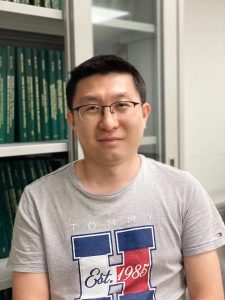
Shuofeng YUAN
Assistant Professor
University of Hong Kong
Drug Repurposing to Combat COVID-19
The collective scientific understanding of Coronavirus Disease 2019 (COVID-19) has evolved rapidly since its emergence, from the recognition of the causative virus, evaluation of effective therapeutics, to development of multiple vaccines within the span of a year. However, the appearance of variants of concern (VOC) with more rapid transmission capacity, immune evasion has highlighted the general lack of antiviral small molecule drugs to fight a global coronavirus pandemic. Repurposing of known drugs could substantially accelerate the deployment of new therapies for COVID-19. To this end, we profiled a library of drugs encompassing approximately 12,000 clinical-stage or Food and Drug Administration (FDA)-approved small molecules to identify candidate therapeutic drugs for COVID-19. We report the identification of thirteen drugs to harbour effective concentrations commensurate with probable achievable therapeutic doses in patients. In particular, we show that clofazimine, an anti-leprosy drug with a favourable safety profile, possesses inhibitory activity against several coronaviruses. Prophylactic or therapeutic administration of clofazimine in a hamster model of SARS-CoV-2 pathogenesis led to reduced viral loads in the lung and viral shedding in faeces, and also alleviated the inflammation associated with viral infection. Combinations of clofazimine and remdesivir exhibited antiviral synergy in vitro and in vivo, and restricted viral shedding from the upper respiratory tract. Clofazimine, which is orally bioavailable and comparatively cheap to manufacture, is an attractive clinical candidate for the treatment of outpatients, particularly in contexts in which costs are an important factor or specialized medical facilities are limited. Our data provide evidence that clofazimine may have a role in the control of the current pandemic of COVID-19 and—possibly more importantly—in dealing with coronavirus diseases that may emerge in the future.
References
- Discovery of SARS-CoV-2 antivirals through large-scale drug repositioning. Nature. 2020. Oct; 586 (7827):113-119.
- Clofazimine broadly inhibits coronaviruses including SARS-CoV-2. Nature. 2021. May; 593(7859):418-423.
Dr. Shuofeng Yuan is currently an assistant professor in LKS faculty of medicine, the University of Hong Kong. His reseach focus on the broad-spectrum antiviral development against emerging infectious viruses that targetting the virus-induced metabolic reprogramming.
Department of Microbiology, The University of Hong Kong
E-mail: yuansf@hku.hk
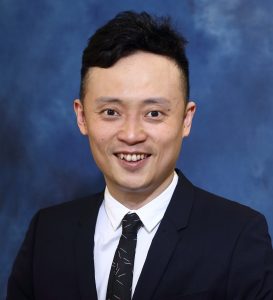
Jonathan C.H. CHOI
Associate Professor
Chinese University of Hong Kong
Using Gold Nanoparticles for Elucidating Cell-Nano Interactions
Advances in nanotechnology have empowered the design of nanoparticles of 1–100 nm in diameter that form the basis of nanomedicine applications, such as targeted delivery, gene regulation and editing, molecular diagnostics, and immunomodulation. To achieve optimal performance, it is imperative that nanoparticles be delivered effectively to the cell type of interest. A rational approach to facilitating intracellular delivery is to develop a detailed and comprehensive understanding in their interactions with cells. Such mechanistic insights will catalyze the clinical translation of nanomedicines.
Gold nanoparticles are a useful chemical handle for exploring how nanoparticles interact with cells, thanks to the many analytical chemistry and imaging tools available for determining their intracellular amounts and tracking the subcellular locations. In this talk, we present two examples of using gold nanoparticles to dissect cell-nano interactions. Firstly, we prepare polyethylene glycol-stabilized, polydopamine-coated gold nanoparticles to establish how dopamine receptors interact with polydopamine nanostructures. Catechol and amine groups collectively mediate the binding and cellular uptake of polydopamine nanoparticles in vitro and in vivo. Secondly, we design a substrate immobilized with gold nanoparticles to create an extracellular environment with sub-10 nm roughness; such an environment upregulates the expression of genes related to clathrin and enhances the intracellular delivery of nanoparticles.
References
- Liu Y, Choi CKK, Hong H, Xiao Y, Kwok ML, Liu H, Tian XY, Choi CHJ*. ACS Nano, 2021, 15, 13871–13890
- Yin B, Ho LWC, Liu S, Hong H, Tian XY, Li H, Choi CHJ*. Nano Lett, 2021, 21, 1839–1847.
Jonathan Choi is an Associate Professor in the Department of Biomedical Engineering and the School of Life Sciences (by courtesy) at CUHK. He obtained his B.S. and M.S. degrees from Stanford University and Ph.D. degree from the California Institute of Technology, all in Chemical Engineering. He was a Croucher Foundation postdoctoral fellow at Northwestern University. He was a recipient of a 2016 Croucher Innovation Award. He is currently the Communications Chair of the Controlled Release Society (CRS) Bioinspired and Biomimetic Delivery (BBD) Focus Group and a Senior Member of the American Institute of Chemical Engineers (AIChE). He is an editorial board member of Pharmaceutics and was a guest editor of Molecular Pharmaceutics. His research interests are bionanomaterials, bio–nano interactions, and targeted delivery.
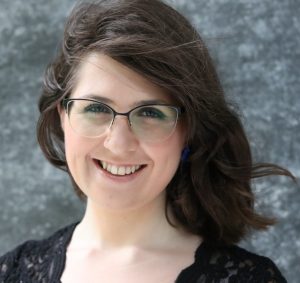
Maria BABAK
Assistant Professor
City University of Hong Kong
Targeting Triple-Negative Breast Cancer with Rationally Designed Gold-Metformin Prodrugs
Triple-negative breast cancer (TNBC) is the most aggressive subtype of breast cancer, characterized by an aberrant metabolic phenotype with high metastatic capacity, resulting in poor patient prognoses and low survival rates. We designed a series of novel AuIII cyclometalated prodrugs of energy-disrupting Type II antidiabetic drugs namely, metformin and phenformin. Prodrug activation and release of the metformin ligand was achieved by tuning the cyclometalated AuIII fragment. The lead complex 3met was 6000-fold more cytotoxic compared to uncoordinated metformin and significantly reduced tumor burden in mice with aggressive breast cancers with lymphocytic infiltration into tumor tissues. These effects was ascribed to 3met interfering with energy production in TNBCs and inhibiting associated pro-survival responses to induce deadly metabolic catastrophe.
References
- M.V. Babak,* W. H. Ang* et al. Angew. Chem. Int. Ed., 2021, 60, 24, 13405-13413.
Dr. Maria (Masha) Babak is an assistant professor at City University of Hong Kong and principal investigator at Drug Discovery Lab. She completed her Ph.D in bioinorganic chemistry at the University of Vienna (2014), mentored by Prof. Bernhard K. Keppler and Prof. Christian G. Hartinger . In 2015-2020 Dr Babak worked as a postdoctoral research fellow at National University of Singapore, mentored by Prof. Wee Han Ang, where she developed a true passion for drug discovery and drug target identification. Subsequently, Dr Babak completed the High Impact Cancer Research Program at Harvard Medical School in Boston. Dr Babak’s research interests lie at the interface of chemistry, biology and medicine and focus on the discovery and preclinical development of anticancer drugs for resistant and aggressive cancers with limited treatment options.
Drug Discovery Lab, Department of Chemistry, City University of Hong Kong, 83 Tat Chee Avenue, Hong Kong SAR, 999077, People’s Republic of China E-mail: mbabak@cityu.edu.hk
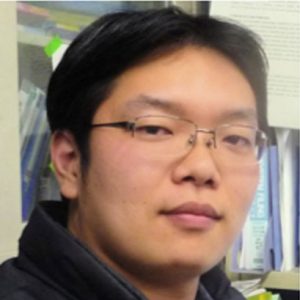
Kou OKURO
Associate Professor
University of Hong Kong
Stimuli-Responsive Molecular Glues for Controlling Protein Functions
Protein plays essential roles in biological events such as signal transduction and metabolism. Therefore, to develop molecules that can control protein functions is one of the key issues in chemotherapy. In general, such molecules are designed targeting a protein involved in a disease to selectively suppress/activate its functions. However, this approach is not always successful since there are still many proteins whose structural information, which is often required for the molecular design, is not available.
Previously, we have developed “molecular glue” bearing multiple guanidinium ion (Gu+) pendants as a universal binding motif for biomacromolecules.1 Molecular glue can tightly adhere to various proteins2 through multivalent salt-bridge interactions and inhibit their interactions with other biomolecules, thereby suppressing their functions.3 Since this can be achieved without denaturation of the protein,3 the protein retrieve its function when detached from molecular glue.4–6 In this lecture, several types of “stimuli-responsive” molecular glues, which alter their adhesivity by external stimuli, and their application for controlling protein functions will be introduced.
References
- R. Mogaki, P. K. Hashim, K. Okuro, T. Aida, Chem. Soc. Rev. 2017, 46, 6480–6491.
- K. Okuro, K. Kinbara, K. Tsumoto, N. Ishii, T. Aida, J. Am. Chem. Soc. 2009, 131, 1626–1627.
- K. Okuro, K. Kinbara, K. Takeda, Y. Inoue, A. Ishijima, T. Aida, Angew. Chem., Int. Ed. 2010, 49, 3030–3033.
- K. Okuro, M. Sasaki, T. Aida, J. Am. Chem. Soc. 2016, 138, 5527–5530.
- R. Mogaki, K. Okuro, R. Ueki, S. Sando, T. Aida, J. Am. Chem. Soc. 2019, 141, 8035–8040.
- N. B. Hentzen, R. Mogaki, S. Otake, K. Okuro, T. Aida, J. Am. Chem. Soc. 2020, 142, 8080–8084.
Dr. Kou Okuro is an associate professor in the Department of Chemistry, the University of Hong Kong. He completed his Ph.D. for development of “molecular glue” designed for non-covalent chemical modification of biomacromolecules under the direction of Prof. Takuzo Aida at the University of Tokyo (2011). Then, he began his academic career at the University of Tokyo as an assistant professor. He received Chemical Society of Japan Award for Young Chemist in 2019. His research interests include supramolecular chemistry, chemical biology, and biomaterials.
Department of Chemistry, The University of Hong Kong
E-mail: okuro@hku.hk
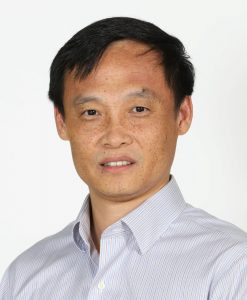
Cai-Guang YANG
Professor
Chinese Academy of Sciences
New Strategies for the Treatment of MRSA Infections
Most antibiotics currently used to treat methicillin-resistant Staphylococcus aureus (MRSA) infections target bacterial cell wall synthesis or protein synthesis. Reliance upon the limited targets for MRSA chemotherapy has contributed to antimicrobial resistance (AMR). So, management of MRSA infections has become a critical public burden in worldwide. Antibacterial drug discovery should emphasize the needs to find new antibiotics, particularly those with novel modes of action. This talk will focus on target-based development of novel anti-MRSA agents that tackle the bacterial ClpP protease and the sortase A enzyme.
All antibiotics in therapeutic application or development pipelines to date inhibit bacterial growth via the principle of target inhibition. The discovery of ADEP-type antibiotics and the investigation on its mechanism of ClpP dysregulation in S. aureus have revealed new strategies for MRSA treatment – activation and corruption of a target, rather than inhibition.1
Beyond conventional antibiotics, antivirulence agents are generally small molecules that inhibit pathogenic targets, for example the sortase enzyme and the carotenoid biosynthetic pathway, without killing S. aureus and therefore have limited capacity to promote resistance.2 Inhibitors of these targets have been identified and these may have potential for further development.3-4
References
- Brotz-Oesterhelt H, Beyer D, Kroll HP, Endermann R, Ladel C, Schroeder W, Hinzen B, Raddatz S, Paulsen H, Henninger K, Bandow JE, Sahl HG, Labischinski H, Nat Med 2005, 11, 1082-1087
- Zhou L, Yang C, Chin J Chem 2019, 37, 183-193
- Zhang J, Liu H, Zhu K, Gong S, Dramsi S, Wang Y, Li J, Chen F, Zhang R, Zhou L, Lan L, Jiang H, Schneewind O, Luo C, Yang C, Proc Natl Acad Sci USA 2014, 111, 13517-13522.
- Chen F, Di H, Wang Y, Cao Q, Xu B, Zhang X, Yang N, Liu G, Yang C, Xu Y, Jiang H, Lian F, Zhang N, Li J, Lan L, Nat Chem Biol 2016, 12, 174-179.
Professor Cai-Guang Yang received his Bachelor of Chemical Engineering from Huazhong University of Science and Technology in 1997, and then studied total synthesis of natural products at Shanghai Institute of Organic Chemistry and earned his PhD in organic chemistry in 2002. After postdoctoral training focused on the study of mechanism of protein/DNA interaction in Chemistry Department at the University of Chicago, he was employed as a professor at Shanghai Institute of Materia Medica in 2008 and started his independent career since then. Research interests in the Yang lab spans many traditional and emerging interfaces of chemistry and biology with noteworthy focuses on the use of medicinal chemistry, structural biology, and biochemistry as well as cell biology to solve biological problems for drug discovery.
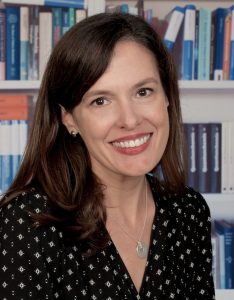
Serena DEBEER
Professor
Max Planck Institute for Chemical Energy Conversion
The Evolution of Electronic Complexity in Biology: Advanced X-ray Spectroscopic Studies of Iron Sulfur Clusters
Iron sulfur proteins are ubiquitous in nature, performing essential roles in electron transfer processes, redox chemistry, regulatory sensing and catalysis. The metal active sites of these proteins range from simple single iron sites to complex eight iron clusters. Perhaps the most complex iron sulfur cluster that has been identified to date is the iron molybdenum cofactor (or FeMoco) of nitrogenase, which is capable of cleaving the strong triple bond of dinitrogen. The fundamental question that arises is how does nature evolve complexity in order to enable challenging transformations? In our view, a deeper understanding of the complex geometric and electronic structure of iron sulfur clusters requires the pursuit of novel experimental approaches for integrating their electronic structure in a detailed and quantitative fashion. To this end, we are applying both 2p3d and 1s3p resonant inelastic X-ray scattering (2p3d RIXS), in order to obtain deeper insights into the electronic structure of these important clusters. These data provide an experimental measure of the d-d transitions and allow for more detailed insights into the nature of the multiplet structure. The utility of these methods for understanding the electronic structure of nitrogenase will be highlighted. The challenges that RIXS spectroscopy presents for theoretical modeling will also be discussed.
References
- Gomez Castillo, R., Hahn, A. W., van Kuiken, B. E., Henthorn, J. T., McGale, J., DeBeer, S. (2021). Probing Physical Oxidation State by Resonant X-ray Emission Spectroscopy: Applications to Iron Model Complexes and Nitrogenase. Angewandte Chemie, International Edition in English, (60), 2-12.
- Van Stappen, C., Decamps, L., Cutsail III, G.E., Bjornsson, R., Henthorn, J.T., Birrell, J.A., DeBeer, S. (2020). The Spectroscopy of Nitrogenases Chemical Reviews 120(12), 5005-5081
Serena DeBeer is a Professor and Director at the Max Planck Institute for Chemical Energy Conversion in Mülheim an der Ruhr, Germany. She is also an Adjunct Professor in the Department of Chemistry and Chemical Biology at Cornell University, an honorary faculty member at Ruhr University in Bochum, and the group leader of the PINK Beamline at the Energy Materials In‐Situ Laboratory at Helmholtz Zentrum in Berlin. She received her B.S. in Chemistry at Southwestern University in 1995 and her Ph.D. from Stanford University in 2002. From 2002-2009, she was a staff scientist at the Stanford Synchrotron Radiation Laboratory, before moving to her faculty position at Cornell. She is the recipient of a European Research Council Synergy Award (2019), the American Chemical Society Inorganic Chemistry Lectureship Award (2016), the Society of Biological Inorganic Chemistry Early Career Award (2015), a European Research Council Consolidator Award (2013), a Kavli Fellowship (2012), and an Alfred P. Sloan Research Fellowship (2011). Research in the DeBeer group is focused on the development and application of advanced X-ray spectroscopic tools for understanding key mechanisms in biological, homogeneous and heterogeneous catalysis.
Max Planck Institute for Chemical Energy Conversion, Stiftstr. 34-36, Mülheim an der Ruhr, D-45470, Germany
E-mail: serena.debeer@cec.mpg.de




